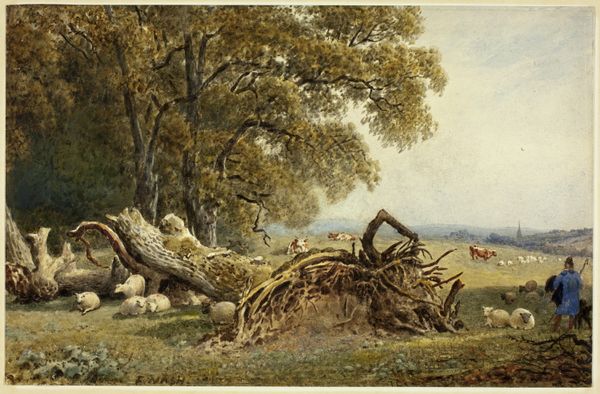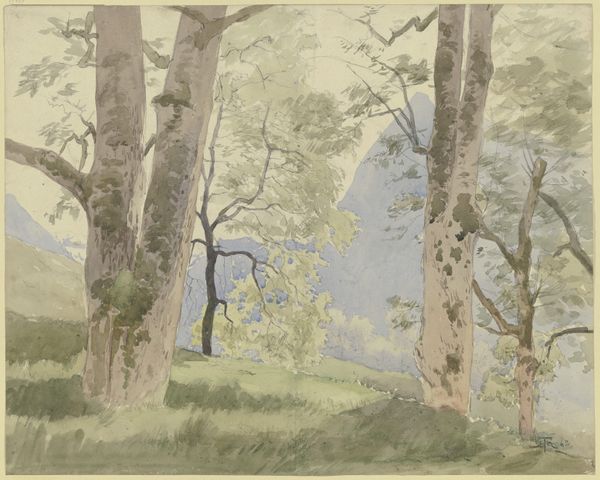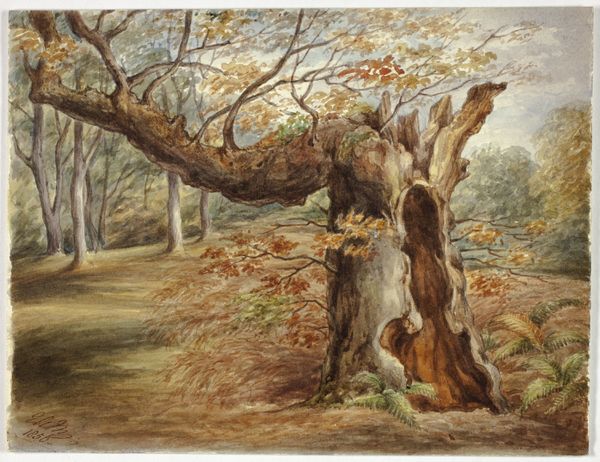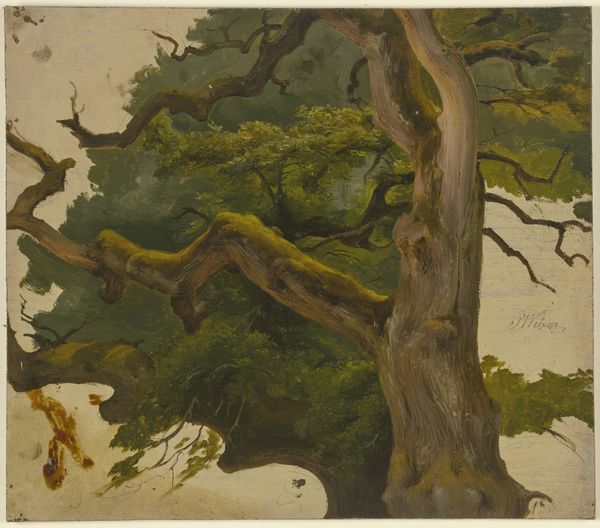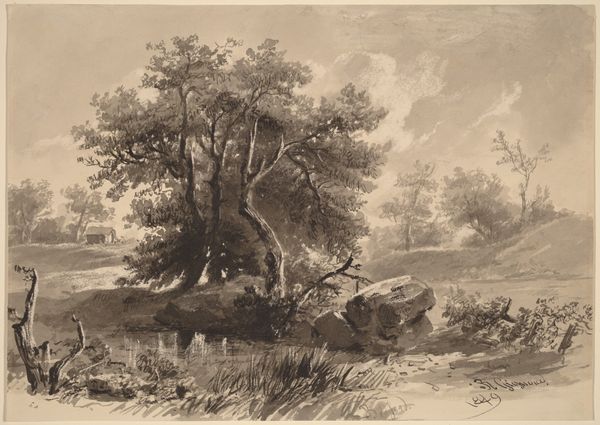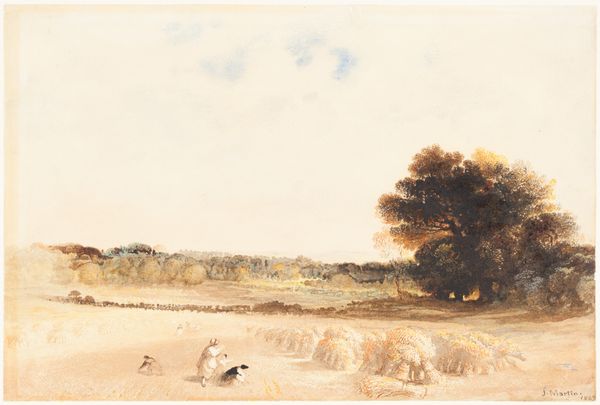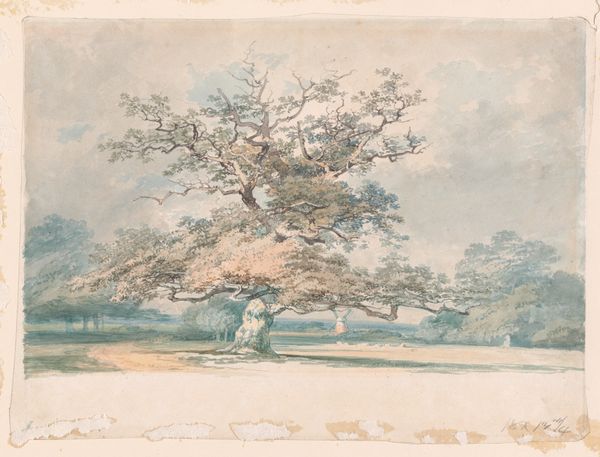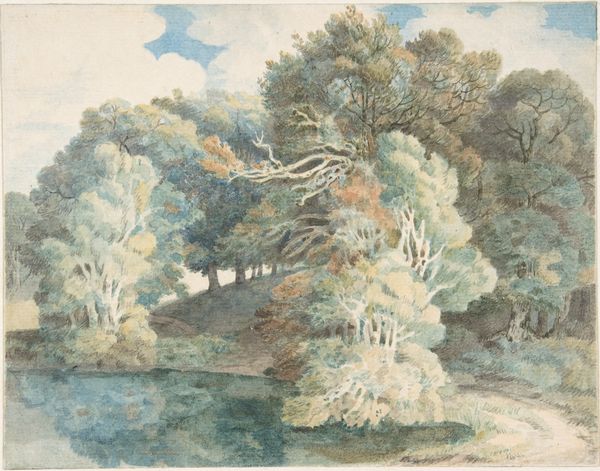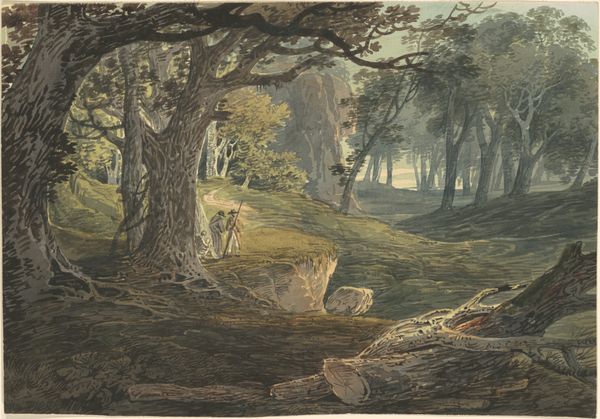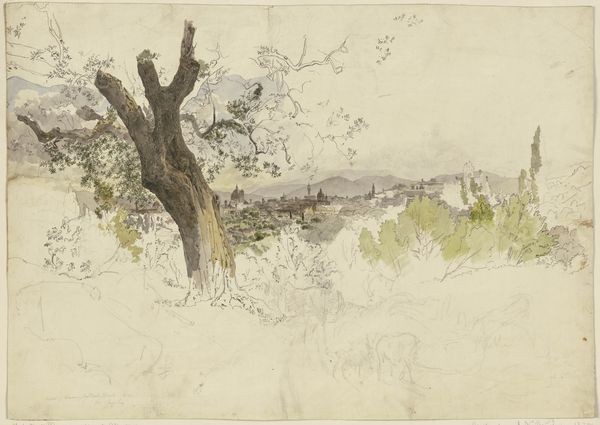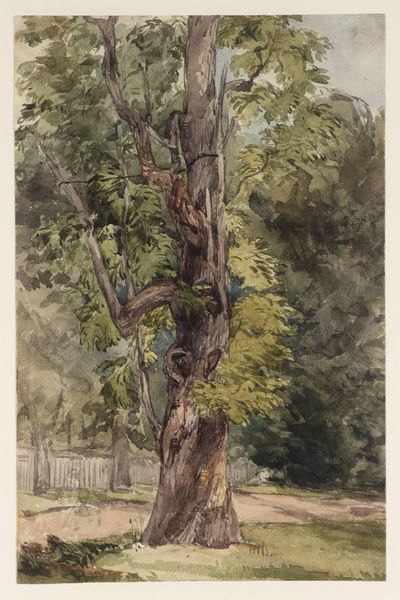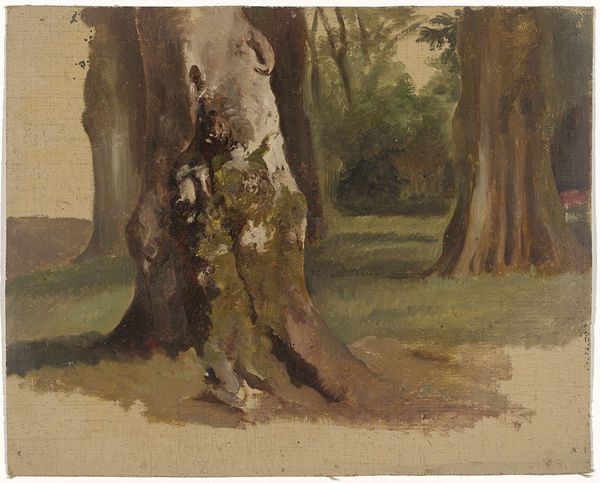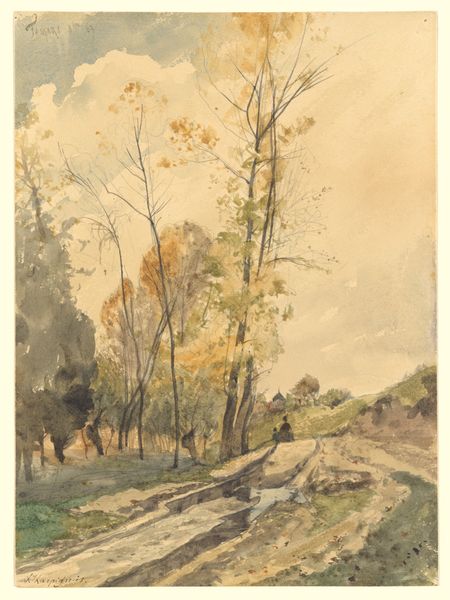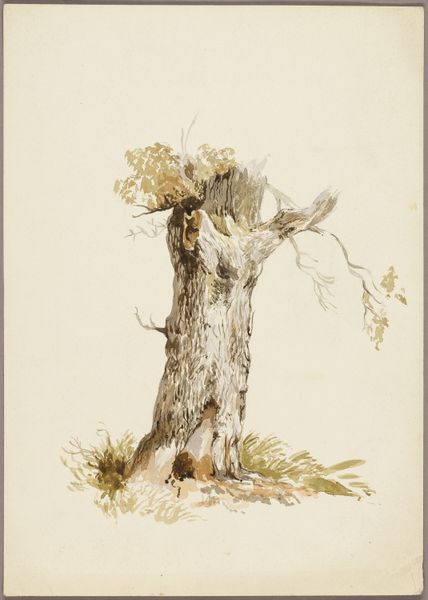
drawing, print, paper, watercolor, graphite
#
portrait
#
drawing
#
animal
# print
#
landscape
#
figuration
#
paper
#
watercolor
#
romanticism
#
graphite
#
genre-painting
#
watercolor
#
realism
Dimensions: 190 × 203 mm
Copyright: Public Domain
Editor: So, this watercolor, graphite, and possibly print artwork is entitled "Family of Deer under a Tree," created by Robert Hills between 1790 and 1844. There's something very calm about the way the deer are huddled together in the shade. How do you interpret this piece? Curator: Immediately, I see a careful arrangement of symbols, drawing upon our shared visual language around nature and family. The tree, a universal symbol of life and interconnectedness, shelters the deer—evoking themes of protection and lineage. Notice how the deer almost seem to be posing, reminiscent of family portraiture. This composition is rich in symbolism – the deer often represent gentleness and vulnerability but their antlers can be seen as virility and strength. The symbolism may be quite different from what we may associate them with today, or is it? How do you think people saw them back then versus how we might now? Editor: That's a great point about the contrast between their antlers and seemingly gentle nature! It seems that today we consider deer beautiful but harmless, maybe a pest to some, but not something necessarily culturally significant. Curator: Indeed. Consider the context. This work arises during a period when Romanticism deeply influenced art. This piece feels deliberately arranged and observed and feels like more than a fleeting glance in the wild. The way that the natural world could represent the power and grace of God, reflecting a deliberate cultural interest to see nature not just for its aesthetic value. This depiction invites us to contemplate the interwoven narratives of nature, family, and even the divine order, rendered through easily accessible symbols. Editor: That’s given me a lot to consider about symbolism in the context of its creation, not just the symbols themselves! Curator: Exactly! Hopefully it reminds us of the ongoing conversation between art, nature, and human interpretation.
Comments
No comments
Be the first to comment and join the conversation on the ultimate creative platform.
